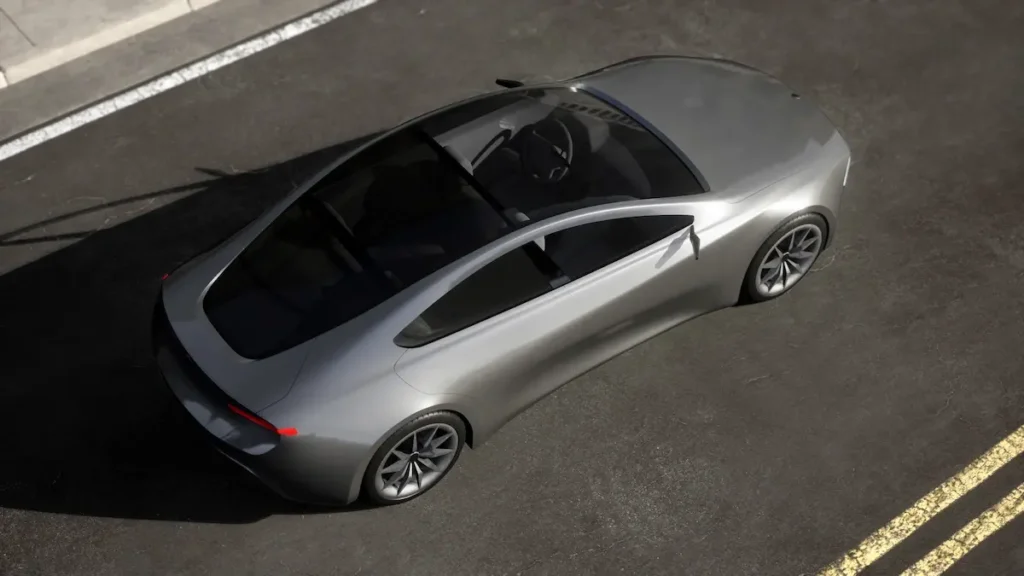- Industries
- Solutions
- About SEKISUI S-LEC
- Downloads
- Contact Us
- Subscribe


Automotive laminated glass with S-LEC™ Sound Acoustic Film remarkably reduces the transmission of external noise, such as traffic, wind, and other disturbing sounds. By using multi-Layer extrusion technology where the acoustic PVB layer (core PVB layer) is placed between two PVB interlayer films (outside PVB layers), the sound insulation performance can be significantly improved while retaining the benefits of PVB interlayer such as safety, UV blocking.
More than half of all vehicles produced in the world adopt windshields with sound acoustic PVB interlayer*1. As electric vehicles and panoramic glass roofs become more popular, the need for quietness increases and the demand for sound insulation glass grows year by year.
*1 SEKISUI S-LEC estimation

With global CO2 reduction targets, many car manufacturers are expanding their range of electric vehicles (EVs), and more startups have emerged.
On the other hand, it is said that the generation of EV-specific noise from the inverter, and external noise such as traffic noise, wind noise and raindrop noise, which has been masked by the engine noise, will become more noticeable. As external noise has a significant impact on the driver concentration and passenger comfort, there is a need for improved sound insulation in EVs.
S-LEC™ Sound Acoustic Film can be applied to the glazing to have an acoustic windshield or acoustic glass for the side windows or panoramic roof to create a quieter EV.

Many car manufacturers and EV startups are introducing a concept where the glazing looks like one large window, rather than separated glazing parts. It’s designed to appear as one extended piece of glass that runs from the windshield through the roof all the way to the rear window. This design also allows for more sunshine to enter into the car and connects the occupants more with their surroundings.
When single tempered or standard laminated glass is used for these vehicles, a lot of noise, such as road or wind noise, can be transmitted into the interior of the vehicle. By applying our acoustic PVB interlayer, S-LEC™ Sound Acoustic Film, these noises can be significantly reduced while maintaining the designer’s original intention of creating a luxurious vehicle cabin.

Panoramic glass roofs have become an increasingly popular option for consumers since the concept of enlarged glazing was introduced by automotive manufacturers. In comparison to traditional vehicles with glass roofs of around 0.5 square meters, latest cars come with more than 2 square meters of roof glass. This especially makes the amount of noise that can come through the roof glass much more significant.
Via wind tunnel tests on actual vehicles SEKISUI S-LEC could confirm that a panoramic roof with S-LEC™ Sound Acoustic Film improves sound pressure by up to 3 dB, equivalent to a 3.7% in the articulation index, compared to standard laminated glass. In addition, significant quietness improvements have been confirmed not only in the front seats but also in the rear seats.
Please contact us for further information on test results.

Noise in cabins is mainly caused by noise entering through the windshield and noise transmitted through the body of a vehicle, such as engine, fans, and exhaust noise. There is however more to cabin noise than just noise transmitted from outside.
In addition, pseudo-noise also has a major impact on a vehicle. Pseudo-noise is caused by air turbulence vibrations impacting the car windshield and windows. The turbulence is created as air passes over the hood, wipers, A-pillar, and side-view mirrors. Pseudo-noise can’t be assessed using Sound Transmission Loss (STL) testing, which is the most common test method to measure the extent to which sound energy is reduced as sound passes through certain materials.
Our NEW acoustic grade, SV grade, is developed to improve the damping performance and significantly reduces vibration noise, which cannot be assessed through STL testing. Using the film not only in windshields but also in side windows can greatly enhance the cabin quietness and comfort, making driving a unique, luxurious experience.
Download the brochure to find out more about the advanced vibration damping technologies and benefits of the new acoustic PVB interlayer grade, SV. Superior cabin quietness is proven through wind tunnel test using an actual vehicle.
